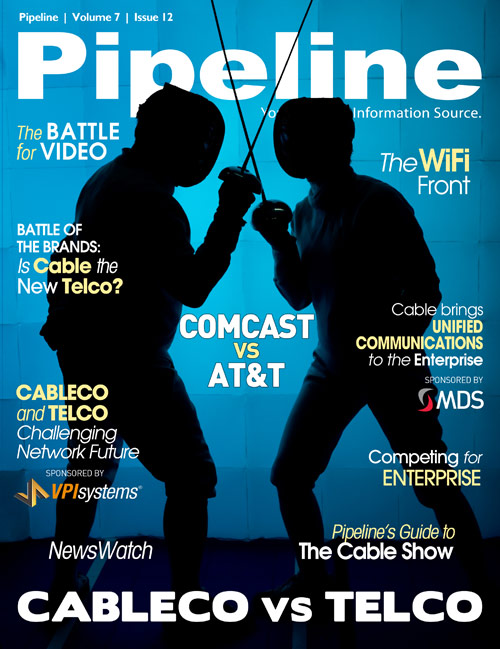Telco v Cable in Fixed Wireless
AT&T U-Verse has also moved into subscription mobility in at least three ways. First – table stakes – subscribers can download smartphone apps that enable remote DVR management. AT&T has also enabled a limited amount of video content to be downloaded to Apple i-devices. And finally, AT&T U-Verse supports HBO GO, a mobile service for HBO subscribers that enables access to HBO content on-demand from WiFi connected devices.
Note that for most operators, the primary reason video content downloads are limited is largely contractual. These new, mobile forms of content access raise issues that "the contract didn't potentially address," says Ortiz. He says this "leaves a gray area they (operators) have to work through" but also that "there's a market for it and I'm sure they'll find a way to see eye to eye on it" given their long standing and lucrative partnerships.


Comcast Stays Home
Comcast boasts 20,000 WiFi hotspots on its home turf between Philadelphia and New York. Despite the massive Xfinity billboard that hovers over Addison Street across from Chicago's Wrigley Field, Comcast has no official WiFi hotspots anywhere in the U.S.'s third largest city. The operator also has no WiFi presence in Peoria and Dayton, smaller cities where it offers its core subscription services. Though Comcast has significant density in Metro New Jersey, with more than 275 hotspots, and in Brooklyn and the Bronx, with more than 1,000, it has no WiFi presence in Manhattan.
This geographic bias is disappointing, because while Comcast is a major content player, and has been a leader in multi-channel delivery, its lack of WiFi presence – and thus of footprint for subscriber mobility – stands to weaken its mobility strategy. Granted, Comcast is marketing its 3G/4G laptop cards and mobile hotspot devices, but that key piece of its mobility strategy hasn't stopped the company from rolling out 20,000 WiFi hotspots in a limited area.
Comcast has rolled out subscriber mobility with an iPad app, but complaints on its web site state that the app isn't working on iPhone or iPod touch as advertised. The app provides the same remote DVR features as the other players, and also provides subscribers with remote access via any WiFi connection to on-demand content. So, the good news is, if you're a Comcast subscriber and want to watch a movie on your iPad while eating at McDonalds, you can piggy-back off of AT&T's footprint to get at your Comcast on-demand video. And at this time, odds are good that you'll get more content from Comcast than from other operators because "Comcast has more weight with the content partners because they own more of the content they distribute," says Ortiz.
Verizon Lacks Focus
Verizon's WiFi footprint is national, but underwhelming. According to the company's online WiFi hotspot finder, there are 5,824 Verizon WiFi hotspot locations, with 50 in New York City, 58 in Chicago, 6 in Dayton, Ohio and 5 in Peoria, IL. Oddly, Verizon only has about a dozen WiFi hotspots along the west bank of the Hudson River, across from New York City. Given that Verizon headquarters is in New York City, its relative lack of WiFi presence in Manhattan and Metro New Jersey is surprising.
What seems to be lacking from Verizon's WiFi approach is a coherent strategy. The big brand relationships, like those AT&T has forged, are clearly lacking. Browsing its hotspot finder – which, to Verizon's credit, is extremely easy to use (AT&T's isn't) – there's no consistency to the restaurants, hotels, or cafes that are listed. Most are local businesses, and even in cases where, for example, Burger King pops up, it's just a few franchise locations in Minnesota – not a national presence.




